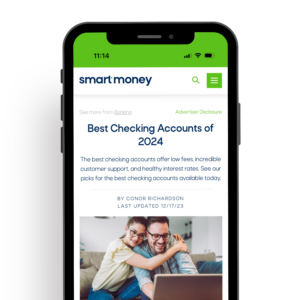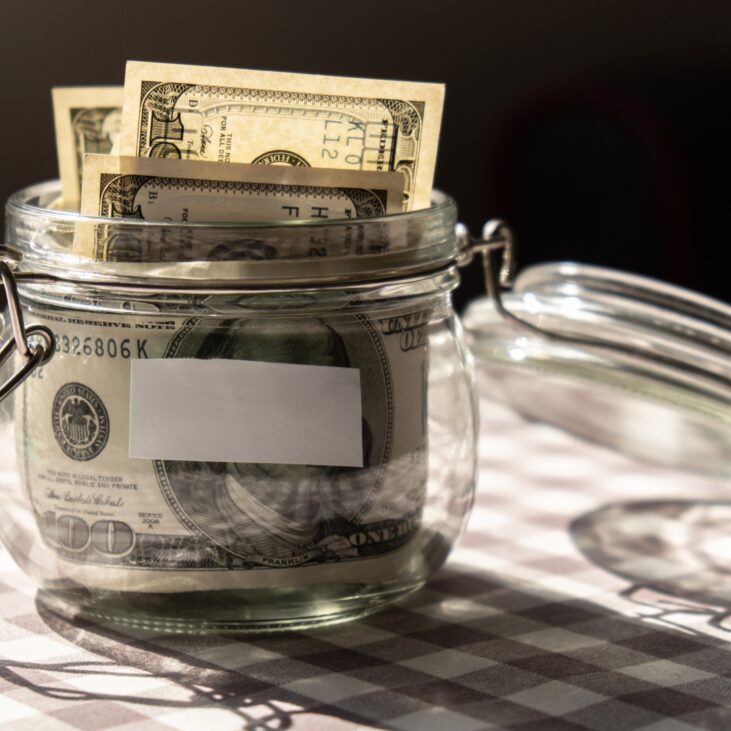Takeaways
- Credit cards allow you to buy items with borrowed funds from a line of credit.
- Credit card applications require information like your income, age, and debts.
- Credit cards let you build up a credit history, which can decrease the cost of borrowing.
- Credit cards give customers and businesses a universal form of payment.
- Credit cards can specialize in travel points, cash-back, or offer other program benefits to encourage potential customers to choose their credit card program.
What is a Credit Card?
A credit card is a payment card issued by banks and credit card companies. Credit cards allow you to pay for goods and services with borrowed money. Unlike debit cards, which use funds from your checking account, credit card transactions use a line of credit. You must repay your credit card balance each month.
Almost everyone knows what a credit card looks like, but credit cards have evolved their look over the last several decades. Many credit cards are plastic, but some promotional, high-end, and exclusive cards are metal to give them a memorable look and feel.
While some credit cards have a unique look, they all have universal features to help businesses process payments quickly. Your card will have your first and last name, card number, expiration date, and unique security code. Most cards have phased out the traditional raised numbers on cards and instead print everything on the back. The back of the card also houses a magnetic stripe to facilitate swipe-style payments at point-of-sale (POS) stations.
Smart Money -> What is a FICO Credit Score?
A newer security feature on credit cards is a security chip, which helps improve transaction security. In addition to the magnetic stripe on the back of the card, there will often be a signature strip. Many credit cards can also handle contactless and mobile payments, which allow consumers to complete a transaction by simply tapping their card on a reader.
When you purchase with a credit card, the payment network contacts your credit card company to see if you have enough credit available to complete the purchase. If enough credit exists, the transaction is approved, and you agree to pay back the authorized amount. Based on your credit card agreement you have a preset repayment grace period, annual percentage rate (APR), and other terms.
Applying for a credit card only takes a couple of minutes. Credit cards will come with a credit limit, the maximum amount you can borrow at any time [1]. Your initial credit limit is determined by many factors such as your credit score, credit history, employment history, income level, and overall financial stability.
Smart Money -> Ultimate Guide: How to Increase Your Credit Limit
Using a credit card responsibly will help build your credit score over time, but only if you consistently make on-time payments and stay within your credit limit. Increasing your credit score will help you qualify for better terms on other credit cards, personal loans, mortgages, and other financial products.
Smart Money -> How to Get the Raise You Deserve
Get Smart With Your Money
Fresh weekly articles delivered straight to your inbox.
Enter your name and email for free tips and tricks.

How Credit Cards Work
Credit cards have become so ubiquitous that when you use your card to pay for a coffee or dinner, you probably give very little thought to the behind-the-scenes mechanics of the transaction. When you purchase with a credit card, here is how the entire process works:
- Making a Purchase: When you use a credit card with a merchant, you can swipe your card or tap or insert the card into a point-of-sale system to read your card’s chip. The terminal will read the encrypted information on your card and request authorization from your credit card provider.
- Authorization: The credit card issuer checks the transaction amount against your available credit and any security measures. If everything checks out, the transaction is approved. The transaction amount is subtracted from your remaining credit balance. Hold tight because the charge is not complete.
- Posting: The transaction is officially recorded and posted to your account. Your available credit is lowered, and your credit card balance increases (which also increases your credit utilization).
- Billing Cycle: Credit cards usually operate on monthly billing cycles. All transactions during your billing cycle are in your credit card statement. Your monthly credit card statement contains information for all your transactions, the total amount owed, the minimum payment required according to the card terms, and the payment due date.
- Grace Period: You are not charged interest if you pay the total amount due on the statement by the due date. The grace period between the end of the billing cycle and the payment due date is critical to understand [2].
- Interest and Minimum Payments: If the full balance on a credit card account is unpaid by the due date, the remaining amount is carried over to the following billing cycle. You are charged interest on the balance. Paying only your minimum monthly payment can result in significant interest charges due to compounding interest. To become credit card debt-free, you need to pay off your principal and interest.
- Credit Limit Management: You should manage your spending carefully to ensure you do not exceed your credit limit. Going over your credit limit can result in additional fees and can begin to negatively impact your credit score by skyrocketing your credit utilization. However, most credit cards will alert you once you are near exceeding your credit limit.
Smart Money -> 9 Alternatives to a Credit Card Cash Advance
Potential Credit Card Fees
Credit cards are convenient, but they are also known for having various fees that users and account holders are not fully aware of. Being informed about these fees is part of being an educated consumer. Here are some of the most common fees you can expect to see:
- Annual Fees: Some credit cards - many with higher-tier rewards or benefits programs - will charge an annual fee. This is simply a fee to have access to better terms and benefits.
- Interest Charges: Carrying a balance past the grace period will cause your balance to begin incurring interest. Carrying a balance month to month can lead to substantial interest charges and negatively impact your credit score. Financial professionals recommend budgeting for credit card payments.
- Late Payment Fees: Most cards will assess a fee for failing to make at least a minimum payment by the due date. Multiple late payments can lead to escalating interest rates.
- Balance Transfer Fees: Some credit cards offer special promotions, like zero-interest balance transfers. This allows you to transfer one card's balance from one to another so that interest doesn’t accrue. Transferring your credit card balance can be a smart financial planning move to help pay off credit card debt. However, you might incur a fee that is a percentage of the transferred balance. Check with your credit card provider.
- Cash Advance Fees: A credit card cash advance is a way to borrow cash with your credit card. A credit card cash advance is one of the highest-cost ways to borrow, but it can also be extremely convenient. Depending on your credit card, you might have to pay a fee at the ATM to access this cash. Additionally, credit card cash advances start incurring interest immediately.
- Foreign Transaction Fees: If you like to travel internationally, you should understand your card's foreign transaction fees. While credit cards allow you to make purchases abroad, U.S.-based cards might charge for purchases made in a foreign currency. This purchase might also be subject to foreign transaction fees, which are usually a percentage of the total transaction amount. These are in place to cover variances in currency exchange rates.
Smart Money -> What is a VantageScore?
Advantages of Credit Cards
Credit cards offer you a low-friction form of payment. This is helpful for when you want to make purchases and don’t want to carry around cash, and it allows businesses to quickly accept payment from customers. Here are several other advantages of credit cards for you to consider:
- Build Credit: Regular and responsible use of a credit card, including making all payments on time and maintaining a low balance compared to your limit, can help build up your credit score.
- Fraud Protection: Credit cards are known for offering high levels of fraud protection. In the case of unauthorized transactions, federal law limits personal liability to just $50 [3].
- Reward Programs: Many credit cards have partnered with other service providers for rewards programs where cardholders earn points, miles, or other rewards for their eligible purchases. These can be redeemed for travel, merchandise, or in some cases, cash.
- Access to Funds: Credit cards allow cardholders to make purchases and manage cash flow even when funds are low. This can be invaluable for emergencies or situations with larger, sudden expenses.
- Other Benefits: Other than rewards programs, credit cards will often come with cardholder benefits like travel insurance, rental car insurance, and more.
Smart Money -> Credit Score: Is 800 High Enought?
Disadvantages of Credit Cards
The advantages of credit cards also act as disadvantages. While credit cards make it incredibly easy to buy things, some people have a hard time controlling their spending. It can be easy to slip into credit card debt, even with an effective budgeting system. Here are some critical disadvantages of credit cards:
- Debt Management: Credit cards make overspending much easier. When you swipe your credit card, you cannot feel how much cash you have spent. Low payment friction can cause you to spend too much and accrue a seemingly unsurmountable monthly balance
- Interest Charges: Credit cards have far higher interest rates than other forms of credit. With annual percentage rates in the double digits, interest payments on unpaid balances can be expensive. It can make repayment very difficult once principal and interest begin to snowball.
- Credit Score Management: Effectively using your credit card can help you quickly build up a FICO score or VantageScore. However, if you don’t make on-time payments, incur a high credit utilization, and max your credit limit, you can torpedo your credit score. A low credit score can increase your future cost of borrowing (e.g., mortgages, loans).
- Hidden Fees: Credit cards can come with a wide array of fees, which can add to the overall cost of the card. Research the best credit cards for your financial situation before applying for a credit card.
Credit Cards vs. Debit Cards
Even though credit and debit cards might seem similar on the surface, there are substantial differences between the two. Finance professionals say grasping the differences is crucial for financial management. Here are four notable differences:
1. Source of Funds
Credit cards allow you to borrow to make purchases as needed up to your credit limit. You must repay the credit card company for these with interest. Debit cards, however, only use money in your checking account.
2. Impact on Credit History
Using your credit card is reported to the credit bureaus and impacts your credit history and credit score. This can be a crucial opportunity to increase your credit score before making a milestone purchase, like a house. Debit cards don’t affect your credit history because you make purchases with cash (not credit).
3. Fraud Protection
Both credit and debit cards have some degree of fraud protection, but credit cards offer more robust safeguards. You can contact the Consumer Financial Protection Bureau if your bank or credit card company does not appropriately handle a fraud report.
4. Rewards and Benefits
Credit cards often have various travel rewards or points programs. You can use these spending perks to accumulate points and travel for free or enjoy special offers through your credit card company or partner brands.
Smart Summary
Credit cards can be an excellent way to pay for everyday purchases. You can accumulate credit card rewards to make travel less expensive and earn cash-back points that decrease the total costs of your purchases. However, credit cards can be a double-edged sword. You must make on-time principal and interest payments and effectively manage your spending to boost your credit score. Before applying for a credit card, analyze and choose the best credit card available.
(1) Consumer Financial Protection Bureau. Can my credit card issuer reduce my credit limit? Last Accessed March 19, 2024.
(2) Consumer Financial Protection Bureau. What is a grace period for a credit card? Last Accessed March 19, 2024.
(3) Federal Trade Commission. Lost or Stolen Credit, ATM, and Debit Cards. Last Accessed March 19, 2024.









